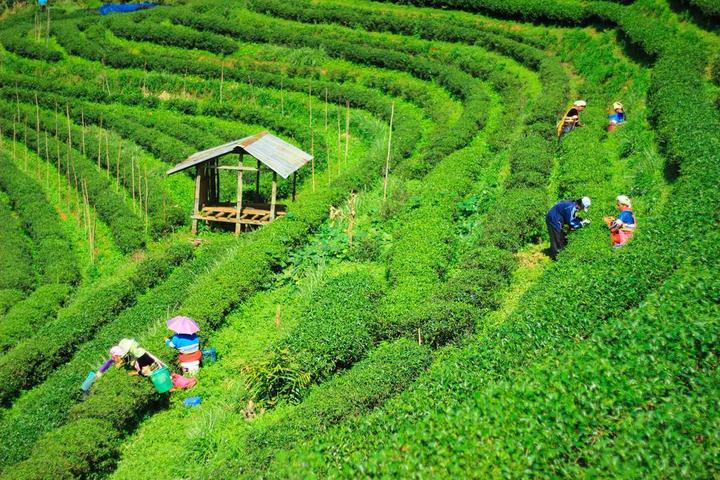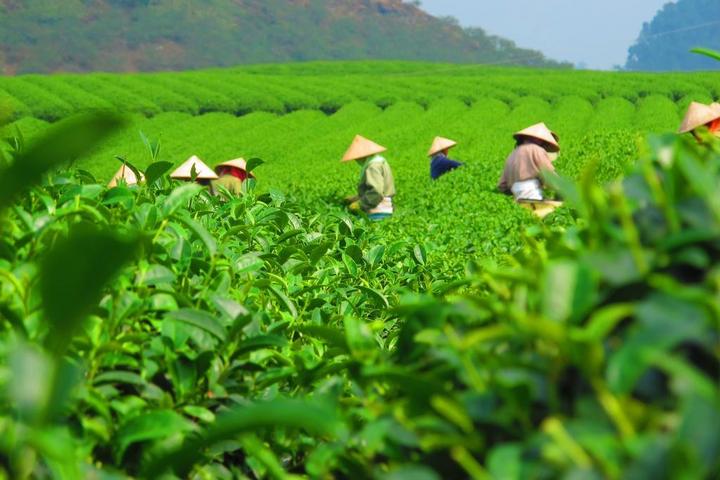


Changjiang University and Hubei Provincial Rape Office have carried out collaborative research, introducing and absorbing the latest domestic and foreign high-quality and high-yield technologies for waterlogging resistance in rapeseed for integrated assembly, and establishing a high-efficiency and loss reduction production technology suitable for the rice oil dual cropping system. The labor force of this technology has decreased from 5-10 to less than 1 per acre, with a 30% reduction in pesticide application, a 10% reduction in fertilizer application, a 20-30% reduction in waterlogging losses, a reduction in machine harvest loss rate to 5-8%, and an increase in yield of 10-15%. This technology can significantly improve the production efficiency of rapeseed in rice fields, and can also be used for rapeseed expansion production in low-lying rice fields.The input cost of this technology is controlled at 400 yuan/mu, and the yield per mu generally reaches 160-210 kg. If calculated at 3 Metacomputing per kilogram, the output value per mu is 960-1260 yuan. After deducting the cost, the benefit per mu is 560-860 yuan. Since 2018, this technology has been widely demonstrated in public security, Shishou, Jiangling and other places for 5 consecutive years, with continuous improvement in production efficiency and increasing product competitiveness year by year. The production efficiency of rapeseed has been increasing year by year, from 550 yuan/mu (Public Security, 2018), 600 yuan/mu (Shishou, 2021), and 660 yuan/mu (Jiangling, 2022). This year, the cumulative promotion area has exceeded 2 million mu.2、 Technical points1. Screening and identification of waterlogging resistant and high yielding rapeseed varieties. Select rapeseed varieties that are suitable for mechanical harvesting, such as waterlogging resistance, high quality, high yield, disease resistance, lodging resistance, and crack resistance. Such as Sunshine 50, Huayou Za 50, Zhongyou Za 19, Sunshine 2009, Dadi 199, Ningza 1818, etc. Other varieties can be quickly identified according to the agricultural industry standard Technical Regulations for Identification of Rape Waterlogging Tolerance NY/T 3067-2016 to determine the waterlogging resistance, and high oil and high yield varieties with high waterlogging resistance index can be selected for promotion.2. Seed treatment before sowing. In order to improve seed vitality, prevent and control pests and diseases during the seedling stage, rapeseed seed coating agents such as “Miaoying” and “Maishuping” are used before sowing to coat or mix seeds. This can continuously control aphids, cabbage beetles, sudden wilt disease, and root rot for up to 30 days, significantly improve waterlogging tolerance during the young seedling stage, promote root development, provide guarantees for high yield, and reduce the amount of pesticide applied during the seedling stage of winter and spring rapeseed.3. Light and simplified sowing. From mid to late September to early October, if the soil moisture is suitable for mechanical operation, the 2BFDN-9 rice and oil dedicated seeder or the combined seeder for oil and wheat can be used to complete the processes of stubble removal, fertilization, sowing, trenching, and soil covering in one go. Two cropping rapeseed is sown in early October, with a seed amount of 200-300 grams per mu and a density of 25000 to 40000 plants per mu; Late sowing (after October 15th) can increase the sowing amount to 300-400 grams, and the density per mu can reach 30000 to 50000 plants. Ditching, no tillage, and direct seeding technology can also be used, which involves manually spraying fertilizers and seeds when the moisture content is suitable after rice harvest. After using a ditcher to open a trench with a width of 2 meters, the soil thrown into the trench is covered with seeds and fertilizers.4. Three ditch supporting facilities. In the Yangtze River Basin with a high groundwater level, in order to reduce the impact of waterlogging on the growth of rapeseed, a disc trencher is used separately after sowing. It is required to match the box, waist, and enclosure ditches to ensure smooth drainage and lower the groundwater level. The main drainage ditch outside the field is equipped with a depth of 0.6-1 meters. Open a waist ditch every 30 meters in the field and a trunk ditch every 2-3 meters. Generally, the width of the trunk groove is 25-30 centimeters and the depth is 20-30 centimeters, while the width of the waist groove is 25-30 centimeters and the depth is 30-40 centimeters.5. Scientific formula fertilization. 40 kilograms of basal fertilizer per acre should be applied with professional slow control fertilizer for strong rapeseed. If there is no slow-release fertilizer and ordinary compound fertilizer or mixed fertilizer is applied, 1 kilogram of borax or 0.5 kilogram of high content boron fertilizer (effective boron of more than 12%) must be added per acre as the base fertilizer to prevent rapeseed from flowering and not bearing fruit. During the budding stage, according to the growth trend of the seedlings, an appropriate amount of 5-10 kilograms of urea can be applied to increase the number of pods, pods, and thousand grain weight in the later stage, preventing fertilization.6. Take multiple measures to resist stains and promote growth and loss. After the occurrence of rapeseed waterlogging, it is necessary to quickly open ditches to drain and lower the groundwater level, and improve the oxygen deficient environment of the root soil. Fertilizers, stress resistant agents, chemical regulators, etc. can be used for growth regulation to promote root recovery and achieve stable yield and loss reduction. Generally, topdressing 5 kilograms of urea and 3 kilograms of potassium chloride per acre, and spraying 60-100ml of New American Star stress resistant agent or 2-4g of Biyi with 30 kilograms of water on the leaves can improve the recovery and growth ability of rapeseed.7. Prevention and control of sclerotinia disease. The occurrence of waterlogging in rice fields is severe, leading to a decrease in resistance to sclerotinia sclerotiorum in rapeseed. Therefore, “one promotion and four prevention” should be carried out during the initial and full flowering stages of rapeseed. Michloraz+tebuconazole (100g per mu) or fluconazole hydroxylamine (maltose) (50ml)+potassium dihydrogen phosphate (100g per mu)+available boron (effective boron content>20%, 50g per mu) can be used for centralized prevention and control using unmanned plant protection machines.8. Mechanical reduction harvest. During the yellowing stage of rapeseed fields, when 80% of rapeseed plants turn yellow, most of the basal pod seeds of the main inflorescence turn black, and the middle pod seeds turn color, segmented harvesting or chemical regulation combined harvesting is used. For segmented harvesting, the segmented harvester can be used to cut, pour and air dry first, and pick up the threshing machine to thresh in sunny weather 5 days later; Chemical regulation combined harvesting: Use a drone to spray 80-100ml of the desiccant regulator “Dicao Kuai” (standing grain harvesting) 10 times the amount per acre. After spraying for 5-10 days, choose a rice and wheat harvester with good weather conditions to directly combine harvesting. Two harvesting methods can reduce the machine harvest loss rate to less than 8%.3、 Suitable areaThis technology is suitable for promotion in the main production areas of winter rapeseed using rice and oil tankers in the Yangtze River Basin (Hubei, Hunan, Jiangxi, Sichuan, Guizhou, Yunnan, Chongqing, Anhui, Jiangsu, Zhejiang, Guangxi and other provinces).4、 Precautions1. The timely sowing of rapeseed is crucial for reducing yield losses caused by waterlogging, and it is necessary to seize soil moisture and avoid late sowing.2. The spraying period and concentration of chemical drought control agents can affect the yield and quality of harvest, and they should be strictly followed according to regulations.

没有reply内容